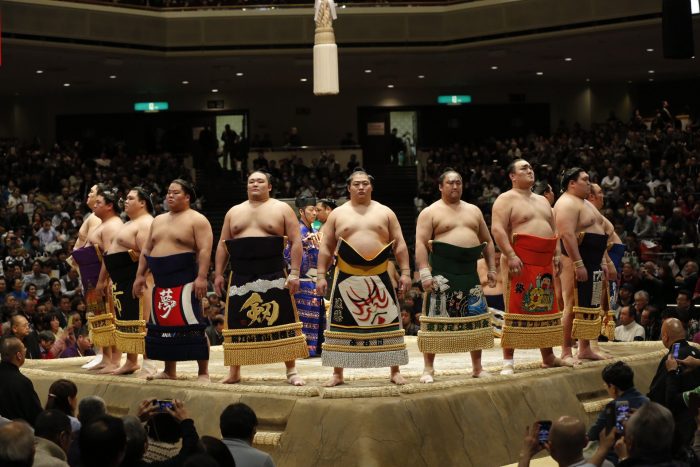Source: The Japan Times
With the passing of Tochinoumi on Jan. 29 there are now just 13 surviving active or retired yokozuna.
Sumo’s highest rank has few, if any, parallels in other sports.
So unique and important is the position of yokozuna that there is a separate independent body whose sole task is to judge the worthiness of those holding, or attempting to reach, the rank.
The intense scrutiny and pressure that comes with being a yokozuna however, generally only applies while a rikishi is active. Once freed of that obligation, it’s no surprise that some former yokozuna have been more than happy to fade into the background upon retirement.
With that in mind here are some facts that you may or may not know about the 13 living former yokozuna:
Kitanofuji
Kitanofuji, the 55th yokozuna is now into his seventh decade of involvement with sumo. A 10-time Emperor’s Cup winner and stablemaster who raised two yokozuna, the always impeccably dressed Kitanofuji has been the face of televised sumo commentary for the past several decades.

Wakanohana (II)
A large portrait commemorating the 56th yokozuna Wakanohana’s perfect 15-0 championship in November 1978 that has hung in JR Ryogoku Station for many years is the only one on the right side as you enter the station. All other portraits are on the left.
Mienoumi
Despite fighting in a time when rikishi almost never put their hands on the ground before a bout, the 57th yokozuna, Mienoumi, upon becoming JSA Chairman, instituted a strict “two hands down” policy that resulted in endless false starts and chaos in the ring during the 2008 autumn tournament.
Hokutoumi
Hokutoumi, the 61st yokozuna is one of only a handful former yokozuna to have the same number of titles as runner-up finishes. Chairman of the JSA since 2015, he is the first-ever member of Takasago Ichimon to hold that position.
Onokuni
Onokuni, who retired 20 years ago, is the last yokozuna to have hailed from the former sumo powerhouse of Hokkaido. As head of the PR dept., he is the JSA member most often quoted in news articles these days.
Asahifuji
Asahifuji, the 63rd yokozuna, had a tougher time than most getting to the top of the sumo pyramid. In the wake of the Futahaguro scandal, the JSA became reluctant to promote new yokozuna. Five straight runner-up performances from September 1988, including two where he defeated a yokozuna (only to lose to the same man in a title playoff) weren’t deemed sufficient. A year later Asahifuji finally won back-to-back titles and earned the white rope.

Akebono
Sumo’s glass ceiling was finally broken in March 1993 when Akebono was promoted to the sport’s highest honor. The 64th yokozuna was first ever foreigner at that rank.
Takanohana
Nephew of a legendary yokozuna and son of one of the most beloved ozeki of all time, the 65th yokozuna Takanohana and his older brother pushed sumo’s popularity to unprecedented heights during the early part of their careers. With legions of young fans screaming with excitement whenever the young stars appeared, the Waka-Taka boom was as close as sumo ever came to Beatlemania.
Read the full article HERE.



